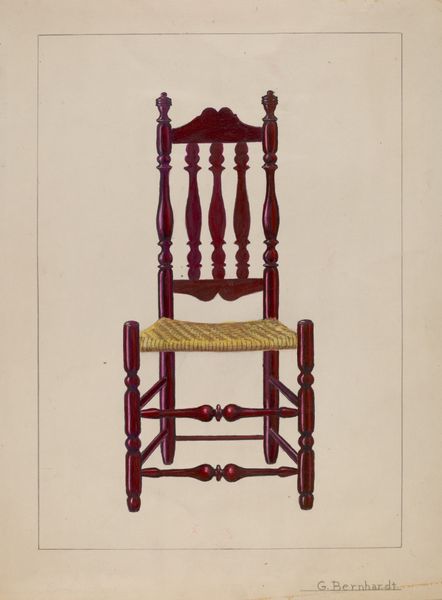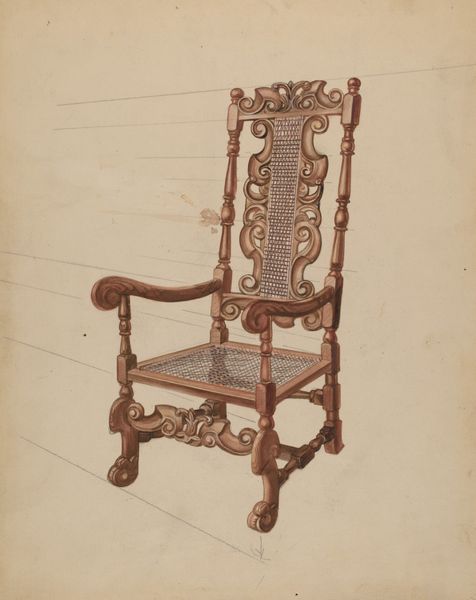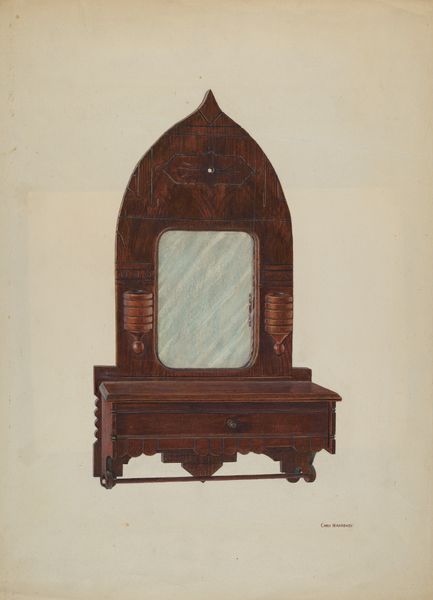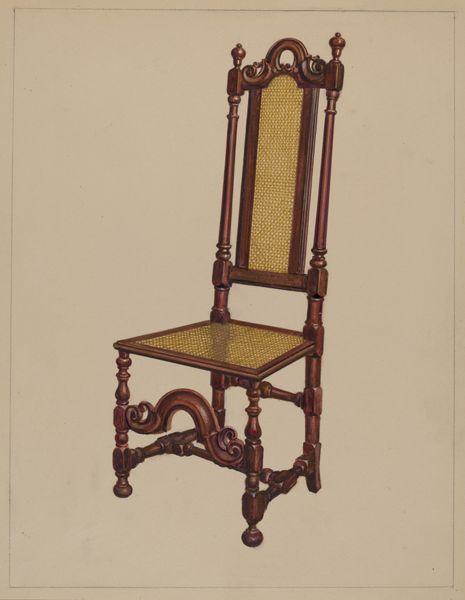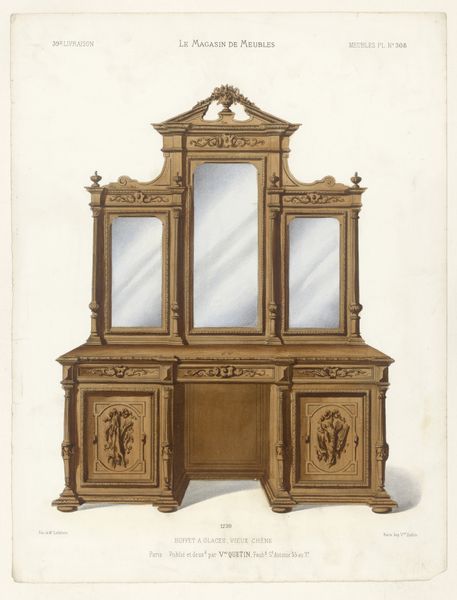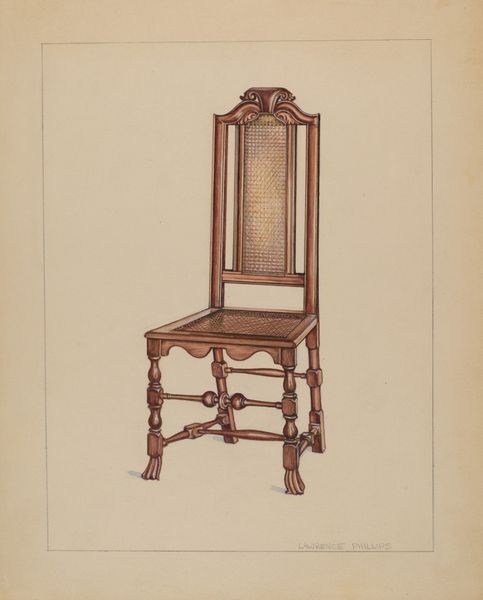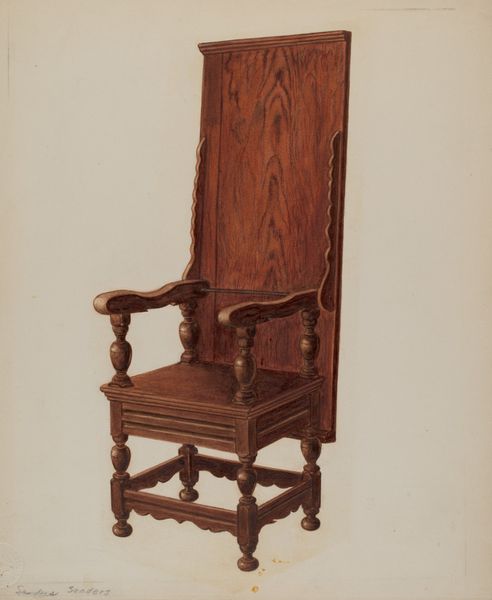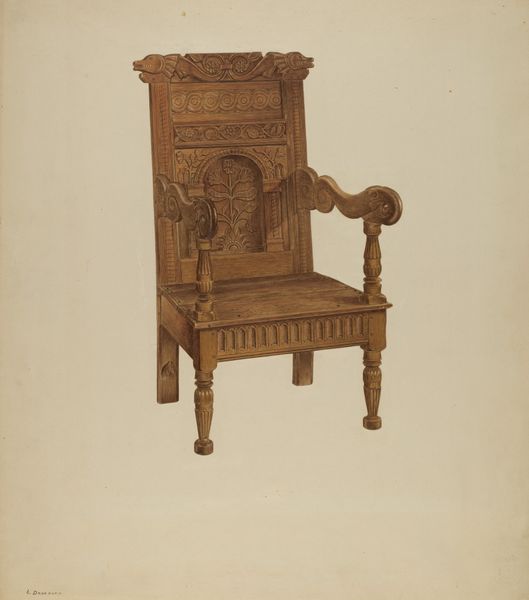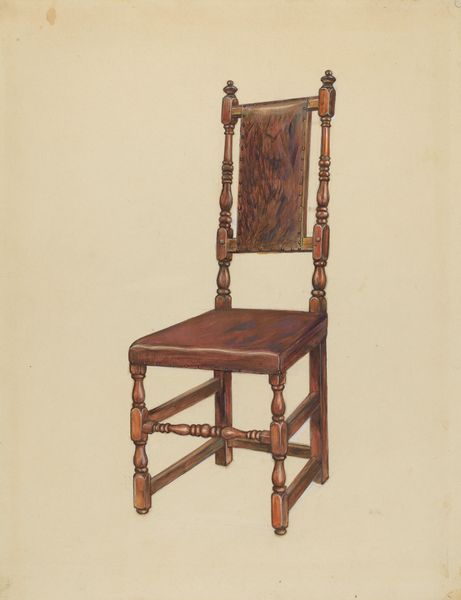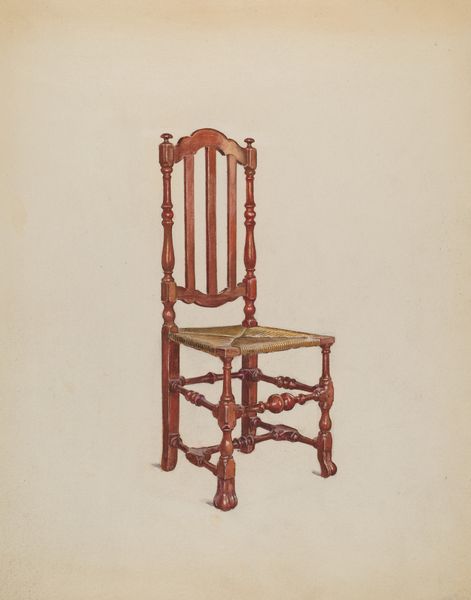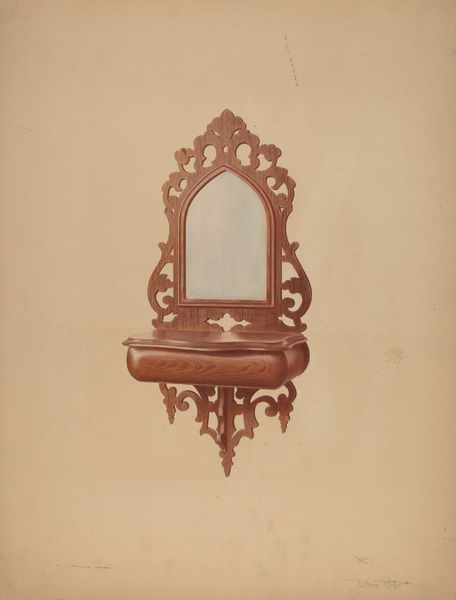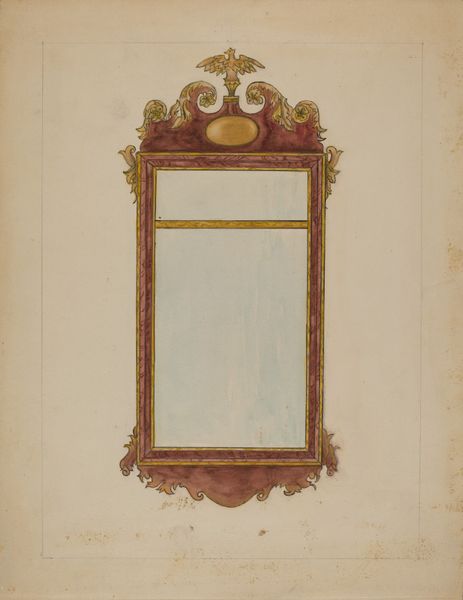
drawing
#
drawing
#
aged paper
#
toned paper
#
yellowing background
#
photo restoration
#
coffee painting
#
yellow element
#
watercolour illustration
#
golden font
#
watercolor
#
warm toned green
Dimensions: overall: 53.8 x 36.4 cm (21 3/16 x 14 5/16 in.)
Copyright: National Gallery of Art: CC0 1.0
Curator: Well, hello there. What do we have here? It looks like a stately yet slightly odd architectural rendering. Editor: My initial impression is rigidity. But, oh, my god, there’s such a comforting, antiqued feeling, it’s like stepping into a grandparent's parlor and recognizing this vaguely colonial monument to "things." Curator: Right? I'm looking at a drawing from Lorenz Rothkranz, done sometime between 1935 and 1942, simply titled, "Clock." Made using, what appears to be, watercolor. The drawing shows a sort of shelf structure with classical architectural details, crowned by an American eagle. I’m seeing empty frames but is it a clock? Is it unfinished? What's going on with it? Editor: See, that eagle! The wings are outstretched almost protectively. Given its construction from separate panels, it makes me wonder if there is some intention to elevate precious items by positioning them into its viewing window. I’m noticing a slightly faded watercolor style, giving it this almost wistful or maybe nostalgic atmosphere. Almost a feeling that these were once-cherished emblems of freedom. Curator: That nostalgia thing makes sense, actually. The entire illustration has that golden yellow, antique tinge— like we found it hidden between the pages of an old book. The watercolor definitely softens the rigidity. What's interesting to me, too, are these prominent columns with diamond cut-outs. There's a playful almost art-deco sensibility clashing against classical Greek-Revival. Editor: It's the tension between rigidity and softness, the classical and, as you pointed out, the modern, that gives it such depth. That diamond cut-out. Is it an emblem for clarity and light? An intention for piercing eyes of enlightenment? Given the yellowed antiquity and framing for “viewable” objects, it does lend itself to an air of preservation. Perhaps, to immortalize specific memory or purpose. Curator: Beautiful, but I can't help but wonder about the clock element, why the artist chose this as its moniker, as there are no dials in this presentation? Or if Rothkranz left those spaces intentionally blank, allowing room for infinite reflection. I can imagine a series of clockworks being installed behind, forever measuring time to infinity…or do you see an argument? Editor: Well, yes. Though "Clock" remains abstract here, time persists within this rendering in other subtle measures. Just think about how, the antiqued coloring suggests years of storage and time… past present future… This isn't just a clock to simply read and see what time it is. Its emblematic architecture serves more so as a preservation piece for what stands eternal. Curator: Absolutely. There is definitely a dialogue being evoked here. I have new eyes on that "Clock." Editor: Same here, it makes you want to start a collection of sorts.
Comments
No comments
Be the first to comment and join the conversation on the ultimate creative platform.
